Kirchhoff's laws
1.Explain the application of Kirchhoff's laws in electrical engineering.
Solution:
Kirchhoff's laws are used to solve a branched electrical circuit – (electrical network) that has multiple sources and resistors connected in various ways. A node is a point in the circuit where at least three conductors meet. A branch is a part of the electrical circuit between two nodes.
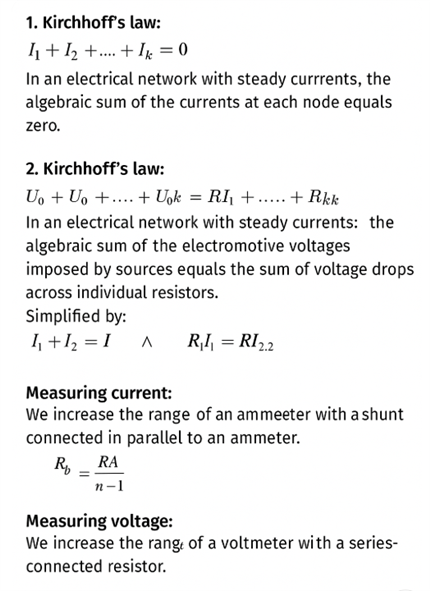
2.A current of 1.5A branches into two resistors connected in parallel R1 = 4Ώ and R2 = 6Ώ. What is the current in each resistor?
Solution:
Analysis:
I = 1.5A, R1 = 4Ώ , R2 = 6Ώ, I1 = ?, I2 = ?
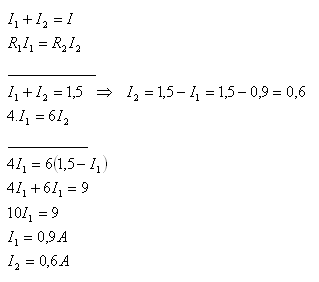
The currents through the resistors are I1 = 0.9A, I2 = 0.6A.
3.Two appliances with resistances R1 = 400Ώ and R2 = 600Ώ are connected in parallel and supplied with a voltage of 300V. Determine the electric currents through the appliances.
Solution:
Analysis:
R1 = 400Ώ, R2 = 600Ώ, U = 300V, R = ?, I = ?, I1 = ?, I2 = ?
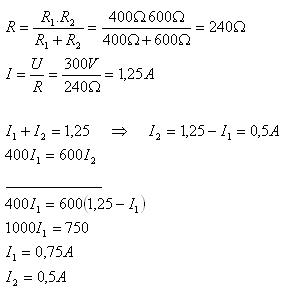
The currents through the appliances are I1 = 0.75A and I2 = 0.5A.
4.An ammeter has a range of 1.2A and a resistance of 0.02Ώ. What must be the shunt resistor so that currents up to 6A can be measured?
Solution:
Analysis:
I = 1.2A, RA = 0.02Ώ, I‘ = 6A, Rb = ?
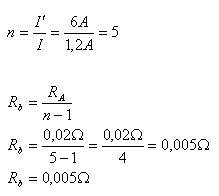
The shunt resistor must be Rb = 0.005Ώ.
5.The voltmeter is designed for a maximum voltage of 10V and we want to measure voltages up to 100V. What will be the resistance of the series resistor if RV = 1kΏ?
Solution:
Analysis:
U‘ = 100V, U = 10V, RV = 1000Ώ, Rp = ?
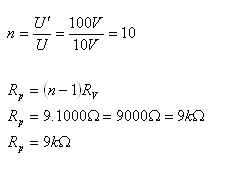
The resistance of the series resistor will be 9kΏ.